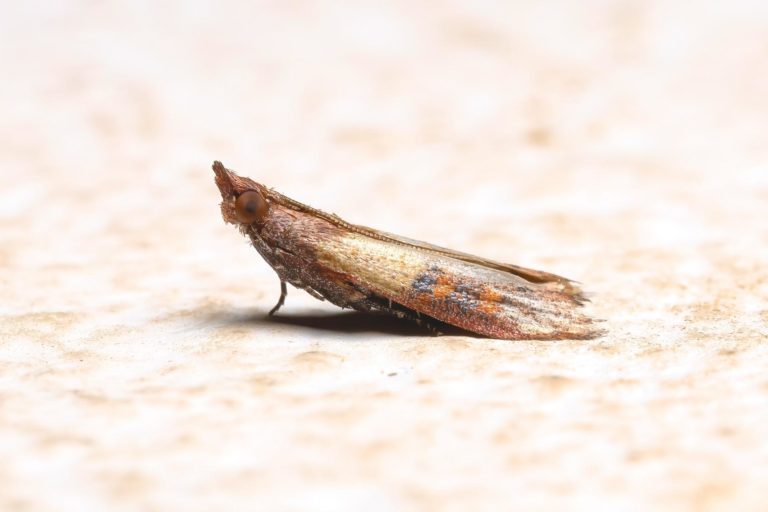Meal Moths
- The Indian meal moth is a pyraloid moth of the family Pyralidae. Alternative common names are weevil moth, pantry moth, flour moth or grain moth.
- The species was named for feeding on “Indian meal” or maize, and does not occur natively in India. It is also not to be confused with the Mediterranean flour moth, another common pest of stored grains.
- The larvae of this species have the ability to bite through plastic and cardboard so even sealed containers may be infested. Once found, the moths are difficult to eradicate.
- Adults Meals Moths are 8–10 millimetres (5⁄16–13⁄32 in) in length with 16–20 millimetres (5⁄8–13⁄16 in) wingspans. The distal two thirds of their forewings are generally reddish brown in color with a copper luster. They can also be bronze or dark gray.
- The eggs of the Indian-meal moth are white, ovate, and very small. It is difficult to see them with the naked eye. Newly hatched larvae are equally difficult to see. They are mostly off-white in color, have brown heads, and develop through five to seven larval instars. When these larvae mature, they measure about 12–14 millimetres (15⁄32–9⁄16 in) long.
- Moths feed on many plant-based foods including dry pet food (plant based), birdseed, cereal, soup mixes, bread, pasta, rice, flour, nairn’s oatcakes, spices, dried fruits and nuts. There is strong evidence that the northern Manitoba wheat supports the development of the moth.
- Usually the life cycle of an Indian-meal moth colony starts in a location where grain is present. The eggs of the moth are grayish white and have a length between 0.3 and 0.5 millimetres (1⁄64 and 3⁄128 in). Eggs can be laid directly on the food source singly or in groups of between 12 and 30. A mature female may lay between 100 and 300 eggs at a time.
- Larvae begin to hatch in approximately two to fourteen days. Newly hatched larvae feed on grain while more mature larvae feed on grain germ. The larvae are an off-white color, but can be pink, brown, or greenish.
- None of the stages of the organism (eggs, larvae, and adults) are temperature tolerant and can be killed by a week of freezing or by brief heating in a microwave or conventional oven when such treatment is practical. Scrubbing infested areas with a mixture of soap and water or vinegar is also effective.

References
Wikipedia contributors, ‘Indianmeal moth’, Wikipedia, The Free Encyclopedia, 3 October 2022, 13:33 UTC, <https://en.wikipedia.org/w/index.php?title=Indianmeal_moth&oldid=1113836870> [accessed 7 October 2022]







